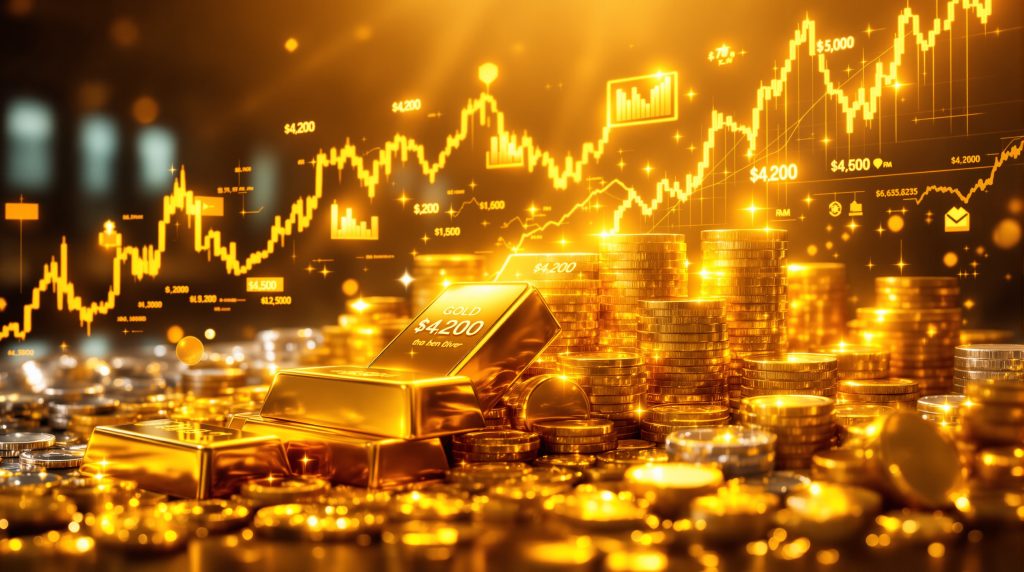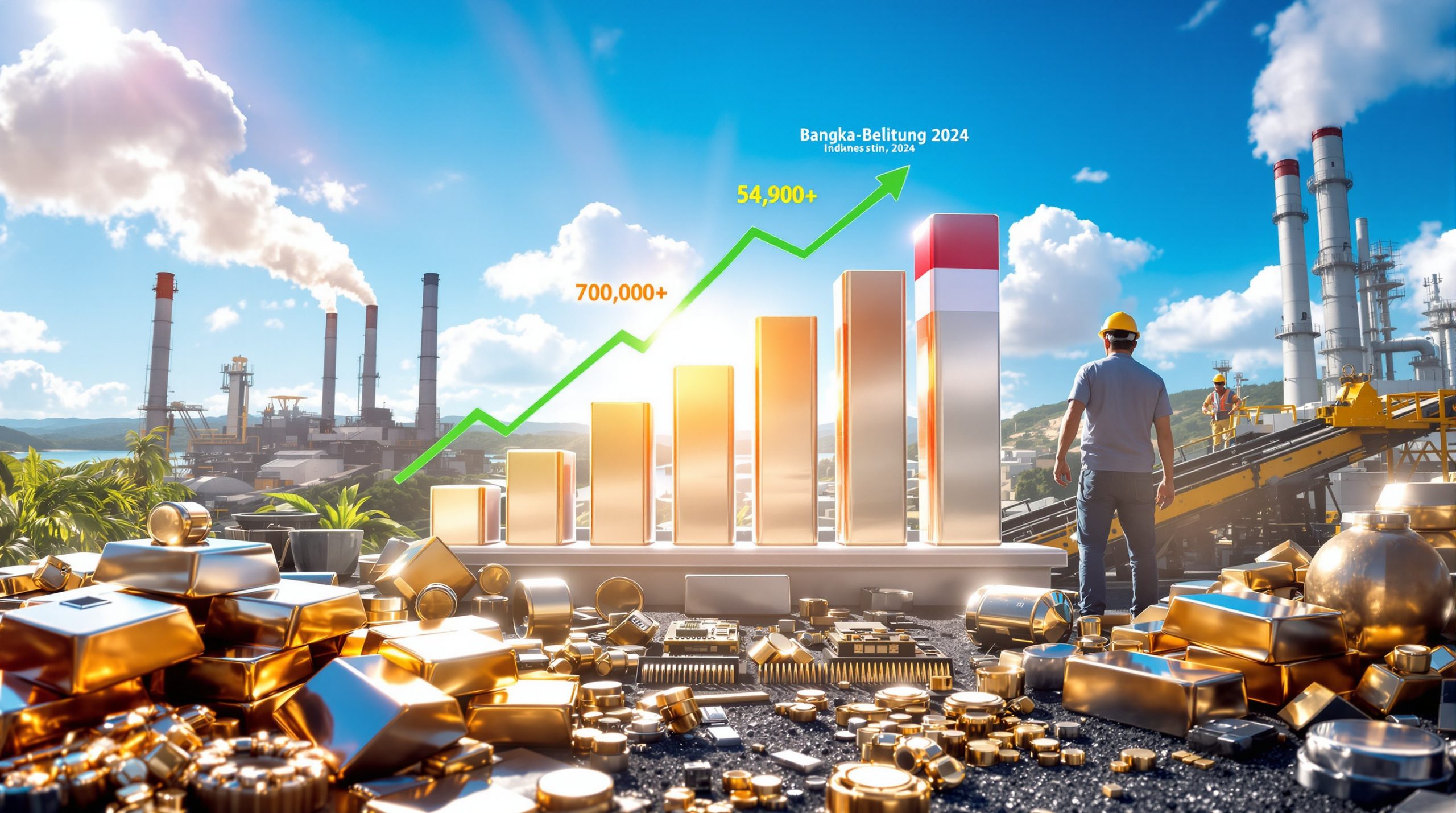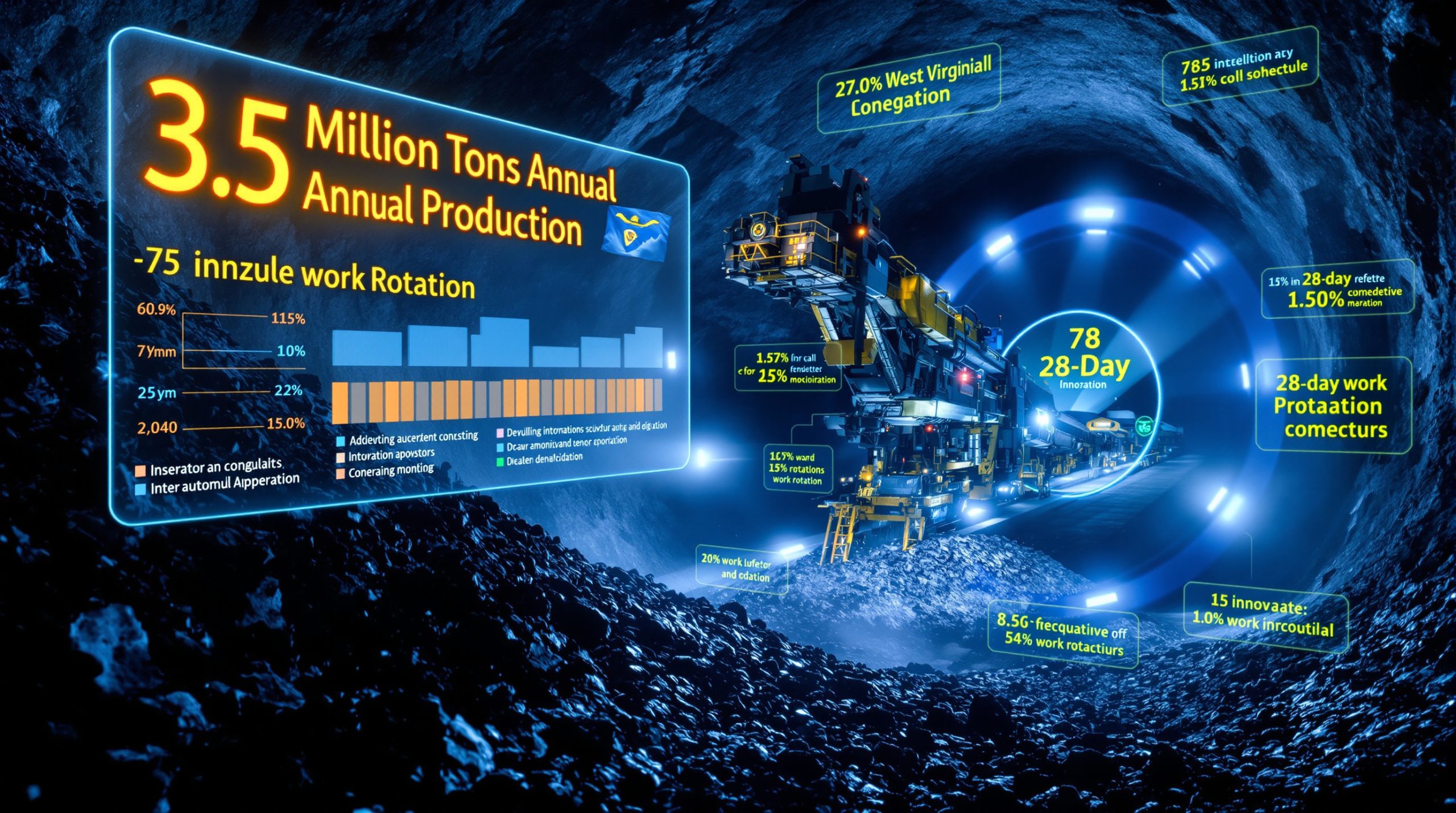The precious metals markets have entered extraordinary territory as gold prices record highs surge past $4,100 per ounce in October 2025, marking yet another milestone in what has become one of the most dramatic bull runs in modern commodity history. This latest breakout represents far more than typical market volatility, signaling a fundamental shift in global investment patterns that extends well beyond traditional safe-haven demand.
Current market dynamics reveal a complex interplay of monetary policy, geopolitical uncertainty, and structural changes in precious metals demand. Unlike previous rallies driven primarily by inflation concerns or currency debasement fears, today's surge reflects multiple converging factors that suggest this bull market may have considerable room to run.
The magnitude of recent gains has caught many analysts off guard. Furthermore, gold prices record highs have more than doubled over a two-year period, while silver has experienced even more dramatic gains, doubling in just 18 months. These parabolic moves across the precious metals complex indicate we may be witnessing a generational shift in how investors view hard assets within their portfolios.
Why Are Gold Prices Breaking All-Time Records?
Economic Uncertainty Driving Safe-Haven Demand
The Federal Reserve's monetary policy trajectory under the Trump administration has created significant market uncertainty. Following the central bank's pivot toward rate cuts in late 2024, with an initial 50-basis-point reduction in September, investors have increasingly questioned the sustainability of current fiscal policies. The U.S. national debt surpassing $35 trillion in 2024, combined with a debt-to-GDP ratio reaching approximately 123%, has amplified concerns about long-term economic stability.
Traditional monetary policy tools appear increasingly constrained as the Fed balances inflation targets against employment mandates. In addition, research from the International Monetary Fund indicates that during periods of policy uncertainty, institutional portfolios typically increase gold allocations by 15-25% above baseline levels. This structural shift reflects growing skepticism about fiat currency stability and government fiscal management.
Interest rate expectations have become a crucial driver of precious metals performance. As real interest rates decline through monetary easing, the opportunity cost of holding non-yielding assets like gold diminishes significantly. Historical analysis shows safe-haven investment insights reveal gold performs exceptionally well when real rates turn negative, a scenario that appears increasingly likely given current policy trajectories.
Geopolitical Tensions Fueling Investment Flows
The current geopolitical landscape under President Trump's administration has created fresh uncertainties around international trade relationships, particularly with China. Trade policy shifts and potential tariff implementations have sparked concerns about global economic disruption and currency instability. These factors traditionally drive investors toward assets that maintain value regardless of political developments.
International sanctions policies have fundamentally altered how central banks view reserve management. Following the freezing of Russian foreign exchange reserves in 2022, many nations have accelerated their gold accumulation programs to reduce dependence on any single currency system. Consequently, this represents a structural change in global reserve management that supports long-term precious metals demand.
Regional conflicts and diplomatic tensions continue influencing investment flows into safe-haven assets. The interconnected nature of modern financial systems means that localized disruptions can quickly spread across global markets, reinforcing gold's appeal as a portfolio hedge against systemic risks.
Technical Market Factors Behind the Breakout
Market structure analysis reveals several technical factors supporting the current breakout:
- Institutional participation: Large-scale institutional buying has provided sustained upward pressure
- ETF inflows: Gold-backed exchange-traded funds have seen renewed investor interest after previous outflows
- Options positioning: Speculative positioning in derivatives markets suggests continued bullish sentiment
- Volume patterns: Trading volumes during breakouts indicate genuine buying interest rather than short covering
The precious metals markets are also benefiting from reduced selling pressure as mining companies maintain disciplined production approaches. Years of underinvestment in new projects have limited supply growth, creating favorable supply-demand dynamics that support higher prices.
How High Could Gold Prices Go?
Expert Price Forecasts and Targets
Wall Street analysts have begun raising their precious metals targets as fundamental conditions strengthen. Goldman Sachs Research published projections in late 2024 suggesting gold could reach $3,000 per ounce by end of 2025, driven by central bank purchases and Federal Reserve policy expectations. However, more aggressive forecasts suggest potential moves toward $5,000 per ounce by 2026, though such targets remain speculative.
Historical precedents provide important context for evaluating current price levels:
| Bull Market Period | Price Range | Percentage Gain | Duration |
|---|---|---|---|
| 1970s Rally | $35 to $850/oz | 2,329% | 9 years |
| 2001-2011 Rally | $250 to $1,900/oz | 660% | 10 years |
| Current Rally (2018-2025) | $1,200 to $4,100+/oz | 240%+ | 7+ years |
The current bull market appears to have significant room for extension based on historical duration patterns. Major gold rallies typically last 8-10 years, suggesting the present cycle could continue into the late 2020s if fundamental drivers remain supportive.
Market Cycle Analysis
Comparative analysis with previous bull markets reveals several key characteristics of sustainable rallies:
- Broad-based participation: Current rally includes retail, institutional, and central bank buyers
- Multiple asset classes: Strength across precious and industrial metals suggests underlying economic themes
- Duration sustainability: Gradual price appreciation interspersed with consolidation periods
- Fundamental support: Real economic and monetary factors rather than speculative bubbles
Warning signs that could signal potential corrections include parabolic price acceleration, excessive speculative positioning, or fundamental changes in monetary policy direction. Currently, while prices have moved aggressively, market performance amid surge analysis shows the underlying drivers remain intact.
Disclaimer: Price forecasts represent speculative analysis and should not be considered investment advice. Precious metals investments carry significant volatility risks and may not be suitable for all investors.
What Does Silver's Performance Tell Us About Precious Metals?
Silver's Parallel Breakout Pattern
Silver's explosive performance, breaking above $53 per ounce in October 2025, represents the metal's first move above the previous 14-year high of approximately $50 set in 2011. For instance, the doubling of silver prices over 18 months significantly outpaces gold's gains, reflecting both industrial demand dynamics and speculative positioning.
The Silver Institute's 2024 research highlights the evolving demand structure:
- Industrial fabrication: 48% of total demand
- Jewelry and silverware: 21% of total demand
- Physical investment: 18% of total demand
- Technology applications: 13% of total demand
Silver's industrial demand profile creates different market dynamics compared to gold. Solar photovoltaic applications represent the fastest-growing segment with 20% annual growth rates, while electronics manufacturing continues expanding with technological advancement. This dual nature as both precious and industrial metal amplifies price volatility during economic transitions.
Gold-Silver Ratio Implications
The current gold-silver ratio of approximately 77:1 (based on $4,100 gold and $53 silver) remains above historical averages of around 60:1. During silver's 2011 peak, this ratio compressed to approximately 31:1, suggesting significant potential for silver outperformance if the ratio reverts toward historical norms.
Furthermore, silver squeeze analysis provides strategic insights for precious metals investors:
- High ratios (80:1+): Historically favour silver accumulation
- Low ratios (40:1-): Typically indicate late-stage bull market conditions
- Mean reversion tendency: Long-term gravitational pull toward 60:1 average
Investment strategies often involve ratio trading, switching between metals based on relative value opportunities. Current elevated ratios suggest silver may offer superior return potential, though with correspondingly higher volatility risks.
How Are Base Metals Responding to This Environment?
Copper's Role in the Commodity Complex
Industrial metals have shown strong performance alongside precious metals, with copper prices gaining 7% in a single week during October 2025. This correlation suggests broad-based commodity strength rather than isolated precious metals speculation. Additionally, copper price insights from the International Copper Study Group project global copper demand growth of 2.7% annually through 2030, driven primarily by clean energy transitions and electric vehicle manufacturing.
Supply constraints in copper markets create structural support for higher prices:
- Development timeline: Average 16-20 years from discovery to production
- Grade decline: Copper ore grades have fallen approximately 30% over 15 years
- Underinvestment: Years of reduced exploration spending limit new supply
- Green transition demand: Electric vehicles require 2-4x more copper than conventional vehicles
The clean energy transition represents a fundamental shift in copper demand dynamics. According to the International Energy Agency's 2024 outlook, copper demand must increase by 40% by 2030 to support renewable energy infrastructure, creating potential supply deficits if new projects face delays.
Broader Commodity Market Trends
Cross-asset analysis reveals important relationships between precious and base metals during different market environments. During economic uncertainty periods, these correlations can diverge significantly, with precious metals strengthening on safe-haven demand while base metals may weaken on growth concerns.
Current market conditions show unusual strength across multiple commodity categories:
- Energy complex: Oil and gas prices supported by geopolitical tensions
- Agricultural commodities: Weather disruptions and supply chain issues
- Critical minerals: Battery metals benefiting from EV adoption
- Construction materials: Infrastructure spending supporting demand
This broad-based commodity strength suggests underlying inflationary pressures and supply-demand imbalances that extend beyond monetary policy factors. Such conditions historically support sustained precious metals bull markets.
Should Investors Take Profits at These Levels?
Risk Management Strategies for Windfall Gains
The cryptocurrency market's recent volatility serves as a crucial reminder about the importance of profit-taking discipline during parabolic moves. Academic research on commodity market timing indicates that systematic rebalancing strategies outperform attempts to time absolute market peaks by an average of 3-7% annually over 10-year periods.
Successful commodity investing requires disciplined profit-taking approaches rather than attempting to predict exact market tops. Historical analysis shows that parabolic price movements often experience sharp corrections regardless of underlying fundamental strength.
Effective profit-taking methodologies include:
- Percentage-based scaling: Selling predetermined percentages at specific price levels
- Time-based rebalancing: Regular portfolio adjustments regardless of price movements
- Volatility-triggered sales: Profit-taking when price movements exceed historical norms
- Fundamental-based exits: Selling when underlying drivers show signs of weakening
During the 2011 gold peak, prices corrected 45% over 18 months from approximately $1,900 to $1,050 per ounce, despite continued monetary easing and economic uncertainty. This historical precedent emphasises the importance of maintaining disciplined selling strategies even during strong bull markets.
Options Expiry and Seasonal Patterns
Mid-October options expiry periods typically coincide with increased precious metals volatility. CME Group research indicates that monthly options expiry dates see average daily price swings increase by 30-50% in the surrounding 2-3 day period. This technical factor creates short-term trading opportunities while potentially triggering temporary corrections.
Seasonal analysis reveals historical patterns that may influence near-term price action:
- October patterns: Historically weak in third week following early-month strength
- Year-end positioning: Institutional rebalancing often creates December volatility
- January effect: New year allocation decisions frequently support precious metals
- Spring weakness: Tax-related selling and reduced safe-haven demand
These seasonal tendencies should not override fundamental analysis but can inform tactical positioning decisions and profit-taking timing.
What Are the Long-Term Implications?
Structural Changes in Gold Demand
Central bank gold purchases have reached historic levels, with 1,037 tonnes purchased in 2023, representing the second-highest annual total on record. This institutional accumulation reflects fundamental shifts in global reserve management strategies. China's People's Bank alone increased official holdings by 225 tonnes in 2023, while Turkey, Poland, Singapore, and Czech Republic joined the buying trend.
The diversification away from dollar-denominated reserves represents a structural change with long-term implications:
- Reserve diversification: Reducing single-currency dependency risks
- Sanctions hedging: Protecting against potential asset freezing
- Inflation protection: Maintaining purchasing power during monetary expansion
- Political independence: Reducing exposure to foreign policy pressures
Technology sector demand continues evolving, with approximately 300 tonnes annually consumed in semiconductor manufacturing, circuit boards, and bonding applications. Growing applications in medical devices and space technology create additional industrial demand streams, though these remain relatively small compared to investment and jewellery consumption.
Investment Portfolio Considerations
Academic research suggests optimal gold allocations range from 5-10% of diversified portfolios during normal market conditions, potentially increasing to 10-15% during elevated uncertainty periods. Moreover, according to ABC News analysis, current market conditions suggest many institutional investors remain underallocated relative to these theoretical targets.
Portfolio construction considerations include:
- Physical vs. paper exposure: Direct ownership versus ETF/futures positions
- Storage and insurance costs: Ongoing expenses for physical metals
- Tax implications: Capital gains treatment varies by jurisdiction and holding period
- Liquidity requirements: Ease of conversion to cash during market stress
- Currency hedging: Exposure to dollar movements for non-US investors
The rise of blockchain-based gold tokens and digital precious metals products creates new access channels while potentially altering traditional demand patterns. These innovations may attract younger demographics previously excluded from precious metals investing.
Key Considerations for Long-Term Investors:
- Gold's role as portfolio insurance becomes more valuable during systemic risks
- Real interest rate environments will continue driving precious metals performance
- Central bank policies globally show increasing precious metals accumulation
- Supply constraints in mining operations support long-term price floors
- Technological applications create additional demand beyond traditional uses
Disclaimer: This analysis contains forward-looking statements and speculative projections. Precious metals investments involve significant risks including price volatility, storage costs, and tax implications. Past performance does not guarantee future results. Investors should conduct thorough due diligence and consider their risk tolerance before making investment decisions.
Navigating Precious Metals at Record Levels
The convergence of monetary policy uncertainty, geopolitical tensions, and structural demand changes has created an environment uniquely supportive of precious metals. While gold prices record highs above $4,100 per ounce may seem elevated, historical analysis suggests major bull markets often exceed initial expectations when fundamental drivers remain intact.
The key for investors lies in balancing opportunity recognition with prudent risk management. Parabolic price movements, regardless of underlying justification, carry inherent correction risks that demand disciplined profit-taking strategies. The cryptocurrency market's recent volatility serves as a timely reminder that even fundamentally sound assets can experience sharp reversals during speculative phases.
Successful navigation of these record price levels requires understanding the difference between short-term volatility and long-term structural trends. Central bank accumulation, reserve diversification, and industrial demand evolution represent multi-year themes likely to support precious metals well beyond current price levels. However, tactical positioning within these secular trends demands flexibility and systematic risk management approaches.
The precious metals complex appears positioned for continued strength, though investors must remain prepared for increased volatility as gold prices record highs reach unexplored territory. Those who maintain disciplined approaches, combining fundamental analysis with systematic profit-taking, are best positioned to capitalise on this historic bull market whilst protecting against inevitable corrections.
Want to Capitalise on the Next Major Gold Discovery?
Discovery Alert instantly identifies significant ASX mineral discoveries using its proprietary Discovery IQ model, delivering real-time alerts that turn complex geological data into actionable investment opportunities. See how historic gold discoveries have delivered exceptional returns to early investors, then begin your 30-day free trial today to position yourself ahead of the market before the next major breakthrough announcement.




